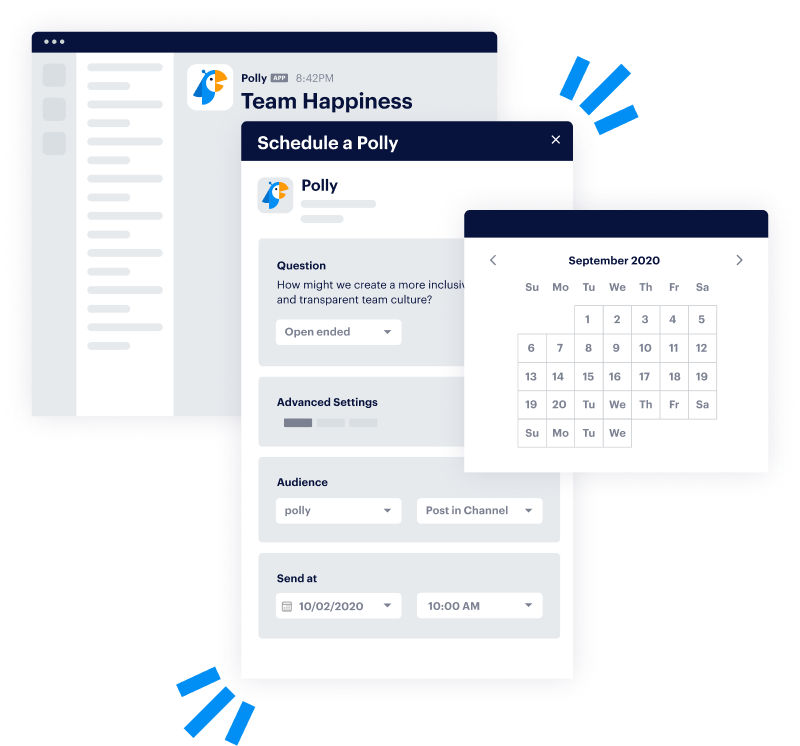 Every company has a culture, whether it’s a carefully designed and curated one or one that has developed completely naturally by accident. Your company culture is part of everything you are and do, from how you attract talent and onboard them to how your team members communicate with each other.
Every company has a culture, whether it’s a carefully designed and curated one or one that has developed completely naturally by accident. Your company culture is part of everything you are and do, from how you attract talent and onboard them to how your team members communicate with each other.
Your company culture is mostly left to exist quietly until an issue comes up or you decide you want to change the way you work to more closely align with your values and goals. In moments like this, you might run a culture survey to get feedback or measure the impact of your work so far.
In this guide, we’ll explore:
- What a culture survey is
- Why culture surveys are so valuable
- How to create more impactful culture surveys
If you feel like change needs to happen, a culture survey is a great way to kick-start that innovation or just to understand how your employees feel about your culture now. Let’s take a closer look at this powerful tool and find out how you can run worthwhile culture surveys in the future.
What is a culture survey?
A culture survey is a questionnaire or poll that helps you gather feedback and insights about your workplace culture and the employee experience. It’s designed to give you a clear idea of how your employees feel about the workplace — whether that’s regarding employees’ individual sense of job satisfaction, your organization’s approach to work-life balance, or how well teams communicate with each other.
Culture surveys are typically online questionnaires with a range of question types, including those with rating scales and open-ended questions. You can send culture surveys out annually, quarterly, or after making big changes to your company culture or core values.
The primary goal of your culture survey should be to find out how others feel about the company or team culture. In particular, the survey should give you insights into whether team members feel like your company excels at demonstrating your company values and mission or whether you’re missing the mark when it comes to employee morale and employee well-being.
Why culture surveys are so valuable
 Culture surveys don’t just give you valuable insight into what your team members are thinking, or how they feel about your values and mission statement, or the latest culture initiatives.
Culture surveys don’t just give you valuable insight into what your team members are thinking, or how they feel about your values and mission statement, or the latest culture initiatives.
With the right questions, these surveys can also:
- Help you understand employee engagement levels
- Identify how your company currently rates on topics like employee satisfaction, happiness, and morale
- Provide a benchmark of your current workplace culture
- Identify challenges and areas for improvement
- Increase transparency and trust throughout the organization
- Demonstrate your commitment to understanding and meeting employee needs
- Help you understand the impact of any organizational culture initiatives
- Support the growth of a positive work environment and culture
You might already run an employee engagement survey once a year to gather general employee thoughts, or regular weekly or monthly pulse surveys to capture in-the-moment insights, but investing in culture surveys too is well worth the time. A well-prepared culture survey can give you unique insights into aspects of the workplace that you wouldn’t otherwise uncover so you continually strive to improve the employee experience.
How to create more impactful workplace culture surveys
Anyone can create and send out a culture survey, but to have the most impact you’ll need to carefully consider your approach, the questions that’ll be included, and how you’ll handle the feedback you receive. If you want to get more out of your future culture surveys, follow these seven guidelines from the experts.
1. Decide what your goal is
 To get the best results, you first need to decide what your overall objective or goal is. Consider what it is about your organization’s culture that you’d like feedback on, so you can design your survey around your goal.
To get the best results, you first need to decide what your overall objective or goal is. Consider what it is about your organization’s culture that you’d like feedback on, so you can design your survey around your goal.
Maybe you want to see whether employees identify with your strong company culture or core values, or possibly you want to get feedback on a specific area like your diversity, inclusion, and equality (DEI) initiatives. Perhaps you want to survey employees on different management styles and how they’re impacting your culture, or maybe you’re looking to get insights on how well your onboarding process prepares new team members for what life at your company is like.
2. Design an engaging survey experience
An intentionally designed culture survey will return a higher participation rate than one you’ve put together without much thought. Think about the experience of taking your survey and how you can design it to be engaging, rewarding, and worth completing.
Keep your survey as short as possible to reduce survey fatigue, and either let team members know how many questions there are upfront or display a progress bar for transparency. Include a mix of question types like multiple choice, short answer, and more detailed questions with space for longer answers.
If engagement and participation are a priority for you, try an internal communication tool like Polly. Our approach to employee surveys and polls (we call them pollys!) means you can easily create and share them in spaces your team members already work in, like Slack and Teams. Combine this ease of accessibility with a short survey with clear and focused questions, and you have a recipe for higher engagement levels.
3. Ask the right company culture survey questions
 Even with a short, succinct, and easy-to-complete survey, you still need to ask the right questions. Design your questions in a way that will give you the best data and insights so you can measure the current situation and make changes based on your desired goals.
Even with a short, succinct, and easy-to-complete survey, you still need to ask the right questions. Design your questions in a way that will give you the best data and insights so you can measure the current situation and make changes based on your desired goals.
Great questions to feature in your culture survey include:
- Would you recommend [organization] to others based on the company culture?
- Does [organization] do enough when it comes to DEI initiatives?
- On a scale of 1-10, with 1 being the lowest and 10 being the highest, how would you rate [organization’s] embodiment of our core values?
- What do you like and dislike about the workplace culture at [organization]?
- Would you say that [organization] has a strong and healthy company culture? Why or why not?
- If you could change one thing about working for [organization], what would it be?
Tailor your employee survey questions to focus specifically on the areas you want feedback on, whether that’s finding out if employees think the organization promotes a healthy work-life balance or evaluating how you can improve teamwork. Use the kind of language your employees use, and keep your questions as simple as possible.
At Polly, we also have plenty of survey templates that you can either use as they are or customize to match your needs and goals. Our employee net promoter score (NPS) template gives you a useful benchmark you can compare over time, and our team happiness pulse survey is a great way to understand your company’s team culture.
4. Allow anonymous survey responses
People don’t always want to share their honest feedback if their name is attached to it. Permitting anonymous survey responses gives you a greater chance of hearing employees’ real opinions.
Use an employee survey tool that allows anonymous feedback, like Polly. Our response anonymity settings can be customized so you can run completely anonymous surveys or confidential surveys where you can collect demographic data alongside anonymous responses. When anonymity is an option, you create more room for open communication and honest responses.
5. Send a reminder
Your team members likely have a long to-do list, and responding to an organizational culture survey likely isn’t at the top of it. Make it easier for them to remember to respond by sending reminders.
With Polly, it’s easy to send a quick reminder to your audience to let them know the survey is still open for responses. In a few clicks, you can send a reminder to the channel or users by direct message, based on your survey preferences.
6. Ask for feedback on your work culture survey
 Feedback should be an integral part of your company culture if one of your core values is transparency. Live by your values, and use this survey as an opportunity to get additional feedback on what you did well and what could be changed for the better.
Feedback should be an integral part of your company culture if one of your core values is transparency. Live by your values, and use this survey as an opportunity to get additional feedback on what you did well and what could be changed for the better.
Add a question to the end of your survey that invites feedback on the experience and process of taking the survey. You could also open up a Suggestion Box as a way to gather employee feedback at any time or host a live or asynchronous Q&A session after you’ve completed the survey. This is a great step toward creating a culture of feedback.
7. Make improvements to your workplace culture
Your employees want to know that participating in your survey is worth it. Demonstrate that you’re serious about their feedback by using it to improve your workplace culture for the better.
Don’t let only your human resources team see the survey results. Share your results with the entire organization, and let them know what you’ll be doing differently from now on as a result of the feedback. This level of transparency contributes to a positive company culture, can result in more satisfied employees, and may even help with retention of top talent who might have otherwise looked elsewhere.
Make your company culture surveys more engaging with Polly
Getting feedback on your company and team culture is a must-have for companies that want to create a welcoming and rewarding employee experience. Use these tips to help you create more engaging culture surveys for the future.
If you’re ready to change how you approach feedback, make Polly your copilot on the journey. Our employee engagement features give you a fresh way to capture feedback and make a positive impact on your organization.

Written by Nicola Scoon
Nicola Scoon is a freelance writer that's passionate about employee engagement and better workplace experiences. She draws on her experience in internal communications to help companies create content that empowers, encourages, and motivates people to create better experiences for all.







